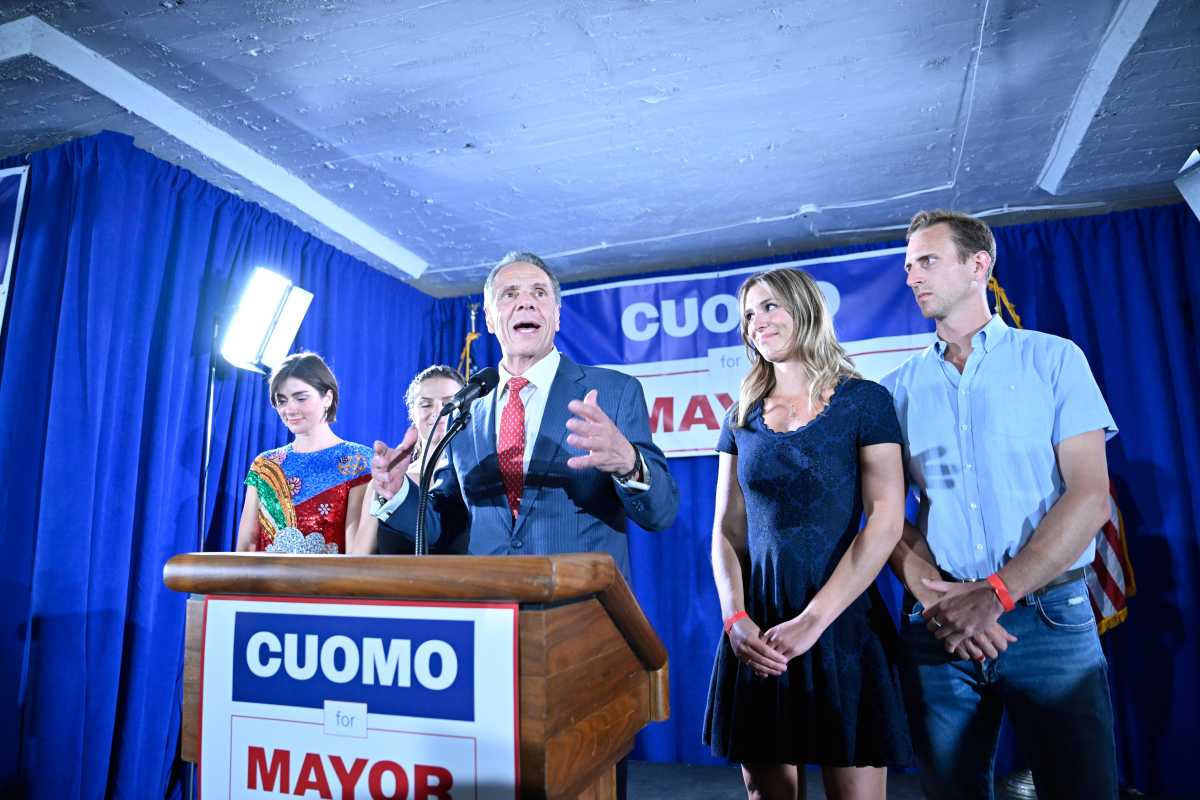Contrary to what the feds claim, designating the Gowanus Canal a Superfund site will have a devastating impact on the ability to construct, and even renovate thousands of homes near the toxic waterway, a coalition of landowners and developers charged this week.
And the Environmental Protection Agency either doesn’t see it — or is choosing not to, critics said.
“The EPA has been spinning everything from day one,” said David Von Spreckelsen, a senior vice president at Toll Brothers, the national homebuilder planning a multi-million residential development along the banks of the canal, and a member of the coalition Clean Gowanus Now! “They are trying to hide the impact that this will have on the neighborhood, so I would tend not to believe them,” he said.
The EPA has previously told this newspaper that development along the waterway ought not be negatively impacted by a Superfund designation — a stance it continues to maintain.
But the coalition charged Thursday that new lending regulations implemented by the Federal Housing Administration, the agency that provides mortgage insurance on loans made by approved lenders, will indeed stymie development along the canal for the next two decades.
Last June, the agency announced that it is implementing a new approval process to insure mortgages on individual units in condominium projects, and detailed what lenders must avoid or mitigate before completing their loan review. Among the conditions are whether a property is “located within 3,000 feet of a dump or landfill, or a site is on an EPA Superfund list or equivalent.”
The changes are part of an array of new guidelines recently implemented by the FHA, which has seen an increase in defaults and dwindling reserves as a large number of its mortgages face foreclosure — the result of risky loans critics say the agency should have never made in the first place.
“It is astonishing that the EPA has either not read, or does not understand the new FHA regulations, which plainly and clearly state that there is a new, much higher standard and risk evaluation for making loans at Superfund sites,” said Ethan Geto, a spokesperson for the coalition.
He said the group recently conducted a survey of major lending institutions — including Wells Fargo, Bank of America, Citibank and HSBC — and found that individuals or families applying for mortgages to purchase, refinance or renovate homes in much of Gowanus, Carroll Gardens, Brooklyn Heights, Boerum Hill and Park Slope will find it “nearly impossible” to obtain approval on FHA-insured loans if the Gowanus is designated a Superfund site. A survey the group conducted in July yielded a similar result.
“This is a direct result of a new federal rule adopted by the FHA in June 2009 that sets forth a requirement that could preclude the FHA from insuring any mortgages on residential units within 3,000 feet of a Superfund site,” the coalition said in a statement.
Geto said the hope is to convince the governor to direct the state Department of Environmental Conservation to withdraw its request that the canal be included in the program in the first place.
The coalition has already met with Lawrence Schwartz, secretary to the governor, as well as the DEC commissioner. “They have listened very carefully,” Geto said.
Opponents of the federal plan say it will take decades for the cleanup to be completed, leaving residential plans like Toll’s to founder and ultimately fail. The coalition supports the mayor’s alternative plan, which they say will accomplish the same thing as the feds, but without the stigma.
Mary Mears, an EPA spokesperson, said the agency recently consulted with the Department of Housing and Urban Development (HUD), of which the FHA is a part, and confirmed that HUD does not prohibit condominium purchase loans for sites located within 3000 feet of a Superfund site.
“HUD’s approval process does require lenders consider a wide variety of environmental conditions, only one of which is proximity to a Superfund site,” she said. But in fact, several of these listed environmental conditions already exist for development locations near the Gowanus Canal, even in the absence of a Superfund designation.
“For example, one factor is the proximity to a heavily traveled road or railroad. Another listed condition that already exists for the Gowanus community is the proximity to a site at which ‘recognized environmental conditions’ have been identified,” she said. And it is possible that other preconditions listed in the letter, she added, such as any hazards or adverse conditions including high ground water levels, unstable soils, or earth fill, may also be present at sites near the Gowanus Canal.
“According to what EPA learned from HUD, none of the environmental conditions — including proximity to a Superfund site — prohibit loans from being made. What is required is that the lender determines that there are mitigants to address such conditions,” Mears said. “For the Gowanus Canal, clearly there are mitigants: Cleanup of the canal, whether through the Superfund or otherwise, would address long-term risks.”
Von Spreckelsen isn’t convinced. He has previously said Toll would not move forward with its project if the canal is included in the Superfund program. “I would tend to believe what the financial sector is saying, as oppose to what the EPA is saying. I don’t think they have their finger on the pulse of the lending environment.”
The EPA continues to weigh whether to include the canal in the controversial federal program, which shifts the burden of a toxic site’s cleanup to those responsible for the pollution. The agency will be hosting a public meeting regarding the canal on Thursday, March 4, at Public School 58, 330 Smith Street, 7 p.m.





















